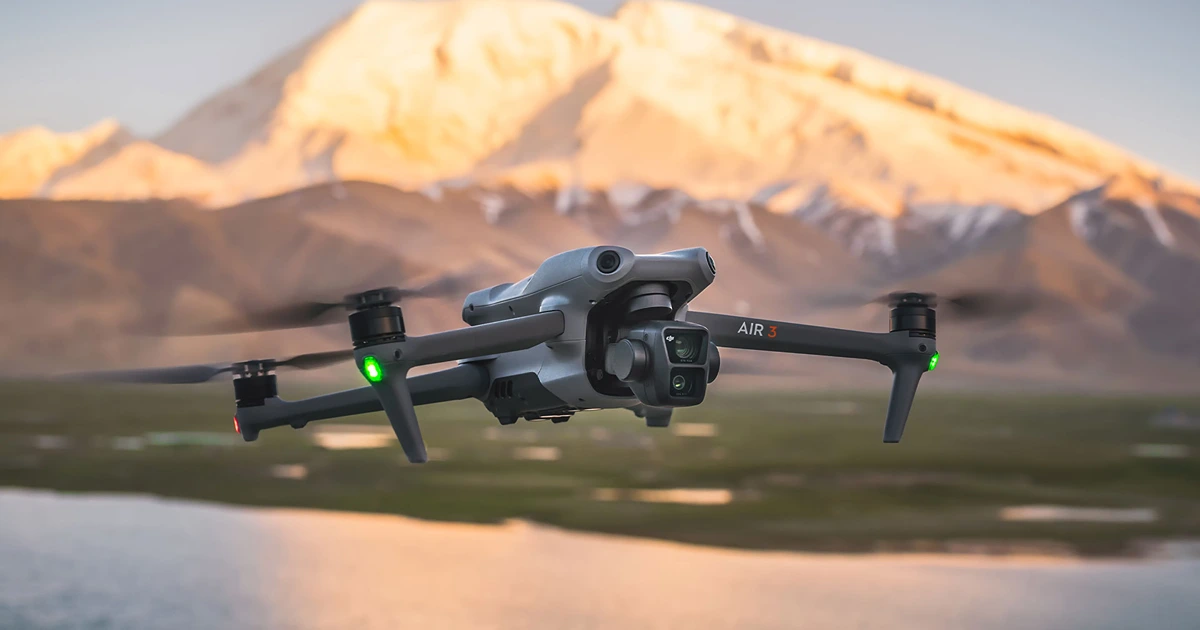Drones have revolutionized photography and videography, giving aspiring aerial creators a ticket to the sky without the need for expensive cranes, dollies, or helicopters. These lightweight, surprisingly affordable machines offer stunning perspectives that elevate any creative project, which is why they’ve quickly become staples in the gear bags of filmmakers, YouTubers, and photographers alike.
However, choosing the right drone isn’t simple. With dozens of models on the market, often from the same brand, each boasting different features and price points, it can be overwhelming to know where to start. After test-flying the most popular drones, we found that the DJI Air 3S stands out as the best option. It combines an excellent main camera, a versatile telephoto lens, and advanced autonomous features in a lightweight, relatively affordable package that meets the needs of most photographers and videographers.
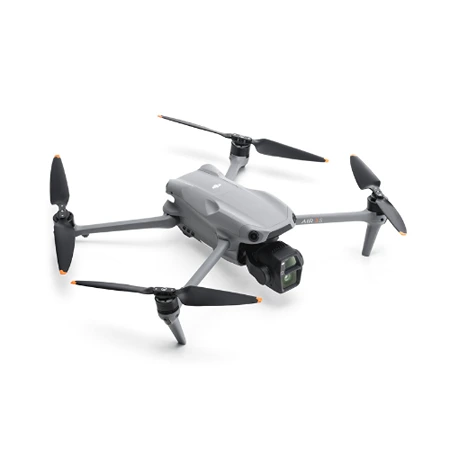
DJI Air 3S
Best Overall Option
The DJI Air 3S combines a high-quality main camera, a versatile telephoto lens, and advanced autonomous technology in a lightweight, portable design.
Buy on AmazonThe DJI Air 3S is an outstanding choice for aerial photographers and videographers seeking impressive performance without the premium price tag of higher-end models. It combines two high-quality cameras with automated obstacle avoidance and an intuitive flying experience, making it ideal for creators who need versatility and reliability. With its advanced technology and approachable design, the Air 3S offers features typically reserved for more expensive drones in a compact, easy-to-use package.
One of the standout features of the Air 3S is its comprehensive obstacle avoidance system. It can detect and navigate around obstacles approaching from any direction, enhancing flight safety and making operation less stressful. This model is also the first consumer-level DJI drone to incorporate lidar, which can identify objects not visible to standard camera-based sensors. Its robust 360-degree obstacle detection supports an improved ActiveTrack mode for following subjects, whether walking or cycling, and its automatic avoidance features work effectively even in low-light conditions.
Subscribe to Product Bible
Stay updated with the latest product reviews, buying guides, and expert recommendations. Fresh advice on the best things we've researched, tested, and reviewed, sent to your inbox weekly.
Want to know more about how we handle your data or opt out of marketing emails? Check out our Privacy Policy. If you have any questions, we're always here to help.
The Air 3S features a versatile two-camera system. Its main camera uses a 24mm-equivalent lens with a large 1-inch sensor and a bright f/1.8 aperture, delivering clear, sharp images even in challenging lighting situations. Mounted just above is a 70mm-equivalent telephoto camera with a smaller 1/1.3-inch sensor and an f/2.8 aperture, offering additional creative flexibility for capturing subjects from a distance with a different perspective. While its telephoto camera doesn’t perform as well as the main camera in low light, it still adds significant compositional options for photographers and videographers.
This drone also demonstrates excellent stability during flight. In winds up to 14 mph, it maintained steady positioning and smooth video recording without drifting. Its battery life is rated for up to 45 minutes, enough to capture extensive footage before needing to recharge, and its improved internal storage of 42 GB offers plenty of space, though adding a microSD card is still recommended for longer shoots. The Air 3S is compact and lightweight, making it easy to pack into a camera bag or backpack for travel.
While the DJI Air 3S does not feature the largest camera sensor in DJI’s lineup, its video quality is more than sufficient for YouTube and social media, and it remains a practical choice for semi-professional and enthusiast creators. Its robust controller, reliable OccuSync 4.0 transmission system, and intuitive Fly app make operation straightforward, with dedicated camera controls and built-in video editing features. Though there are security considerations to be aware of, the Air 3S remains an excellent value for anyone looking to elevate their aerial photography or videography without stepping up to the much pricier Mavic 3 Pro.
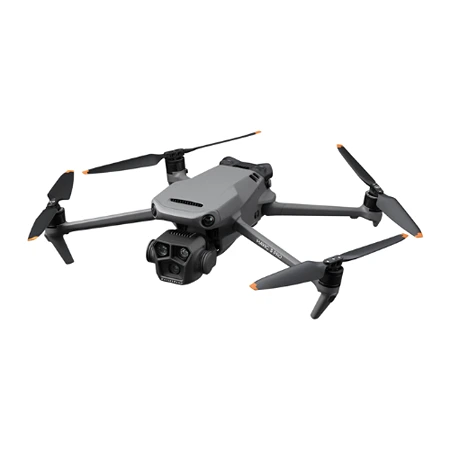
DJI Mavic 3 Pro
Best High-End Option
The DJI Mavic 3 Pro offers unmatched camera quality with its Hasselblad main camera and dual telephoto lenses, combined with long battery life and advanced obstacle avoidance.
Buy on AmazonThe DJI Mavic 3 Pro is the ultimate choice for professional photographers and filmmakers who want the highest image quality and maximum flexibility in their aerial shots. It features a powerful main camera with a large Four Thirds sensor and a Hasselblad-branded wide-angle lens, producing exceptionally clear, detailed, and colorful photos and videos. Compared to smaller sensors on other drones, this combination captures truer colors and performs impressively well in low-light conditions, making it ideal for a wide range of professional applications.
This drone also includes two additional telephoto cameras, enhancing its versatility for different shooting scenarios. Its medium telephoto lens offers a 70mm-equivalent focal length with an f/2.8 aperture, while the longer telephoto lens provides a 166mm-equivalent focal length with an f/3.4 aperture. Despite having smaller sensors than the main camera, these lenses still produce good quality images and are particularly useful for wildlife photography or capturing distant subjects without disturbing them. The main camera can record video in stunning 5.1K resolution at up to 50 frames per second with a maximum bit rate of 200 Mbps, delivering sharp, cinematic footage.
The Mavic 3 Pro excels in flight safety and navigation thanks to its omnidirectional obstacle sensors. These sensors detect and avoid obstacles from all directions, making it easier to fly confidently in complex environments. The controller and DJI Fly app provide clear visual and audio alerts about hazards, ensuring smooth and safe operation even in tight spaces or when navigating around trees, buildings, or other obstacles.
Battery performance is also a strong point for this model. With a stated flight time of up to 43 minutes, it offers enough duration to capture extensive footage before needing a recharge. Its range extends up to 17.3 miles, although federal regulations require the drone to remain within line of sight during operation. Despite its advanced capabilities, the Mavic 3 Pro remains portable and practical, weighing just 2 pounds and folding down to fit easily into a camera bag. It requires minimal setup before flight, aside from removing its protective camera cover.
For professionals seeking even greater performance, DJI offers the Mavic 3 Pro Cine version, which upgrades the internal storage to a 1 TB solid-state drive and supports the Apple ProRes 422 HQ codec for higher-quality video production. However, this version comes bundled in the Premium Combo, which includes the upgraded DJI RC Pro controller and additional accessories, and its price places it out of reach for most hobbyists. Overall, the Mavic 3 Pro is the high-end drone to choose when image quality, flight stability, and versatility are top priorities.
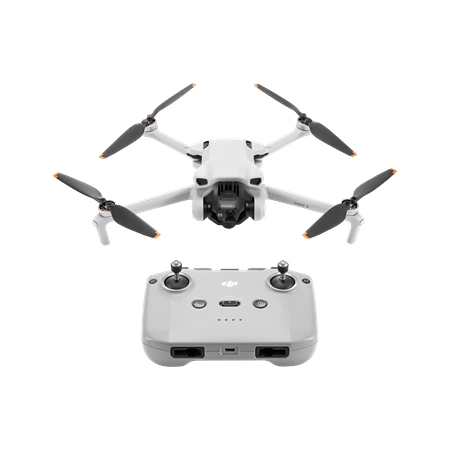
DJI Mini 3
Best Budget Option
The DJI Mini 3 offers excellent camera quality in a compact, lightweight design that doesn’t require FAA registration, making it the perfect choice for beginners.
Buy on AmazonThe DJI Mini 3 is an excellent choice for beginners and budget-conscious photographers looking to experience aerial photography without spending a fortune. While it does not produce images as stunning as the Air 3S or Mavic 3 Pro, it offers impressive capabilities for its price, including 4K video recording and a lightweight design. Its compact size and intuitive controls make it easy to operate, providing a solid introduction to drone flying for new users.
This drone offers straightforward usability features such as one-touch takeoff, landing, and return-to-home functions. Its positioning system, supported by downward sensors, ensures it remains stable while hovering, and its 38-minute flight time with the included battery is respectable for a model at this price point. These features combine to deliver a smooth and accessible flying experience that will appeal to hobbyists and casual creators.
The camera quality on the Mini 3 is notably strong for a budget drone. It features a 1/1.3-inch sensor capable of capturing 48-megapixel photos and recording 4K video at 30 frames per second. Its wide-angle f/1.7 lens provides good low-light performance, making it versatile for shooting in various lighting conditions. Additionally, the camera can physically rotate to shoot vertical video, a feature particularly useful for social media platforms like Instagram, Facebook, and TikTok.
One of the Mini 3’s biggest advantages is its small size. Weighing just under half a pound with the standard battery, it skirts the FAA’s 250-gram weight limit for registration, allowing most users to fly it without needing to register for recreational use. DJI does offer an Intelligent Flight Battery Plus that increases flight time to 51 minutes, but this pushes the drone over the weight threshold, requiring registration before flight.
Despite its budget-friendly price and compact size, the Mini 3 offers a reliable range of up to 11 miles, though regulations require the drone to remain within visual line of sight. Its connection to the DJI Fly app or optional RC controller provides smooth live streaming from the camera, easy access to intelligent flight modes, and convenient features like auto takeoff and landing. All in all, the DJI Mini 3 is a capable and affordable option for those looking to explore drone photography without committing to a more expensive professional model.
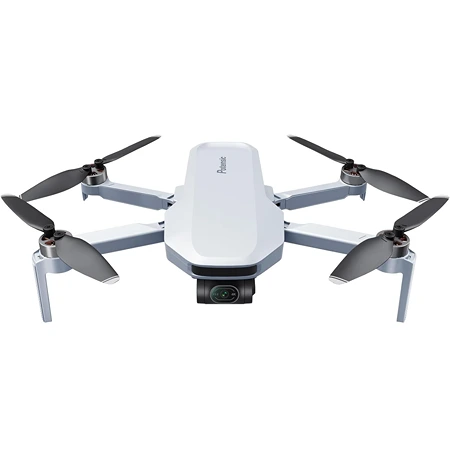
Potensic Atom
Cheapest Option
The Potensic Atom is an ultra-budget drone that offers 4K video, decent stability, and a lightweight design, making it a practical entry-level choice.
Buy on AmazonThe Potensic Atom is an attractive choice for those who prioritize affordability above all else. This drone offers a combination of features that is impressive for its low price point, making it suitable for beginners or casual users who want to experience aerial photography without a significant financial commitment. Its compact design keeps it under the 250-gram registration limit, allowing it to be flown recreationally without additional paperwork.
Equipped with a three-axis gimbal and a 4K camera, the Potensic Atom can capture stable footage suitable for basic video projects and social media content. However, its camera is limited to recording 4K at 30 frames per second, which may not satisfy creators who want smoother high-resolution footage for professional editing. Despite these limitations, having a 4K-capable drone with a gimbal at this price is a notable advantage for budget-conscious buyers.
The Atom’s camera system uses a smaller sensor and a fixed f/2.2 aperture without autofocus, which impacts image quality, particularly in mixed or low-light conditions. Compared to more advanced models like the DJI Mini 3, it struggles to produce shots with the same clarity and dynamic range. This makes it less suitable for those who need consistent, high-quality imagery in varied environments.
On the positive side, the Potensic Atom includes flight modes similar to those found in DJI’s Mini series, such as automated takeoff and landing, return to home, and basic tracking functions. These features make it easy for new pilots to operate confidently and capture cinematic shots without mastering manual flight controls.
While the Potensic Atom may not match the imaging performance of higher-end drones, it remains a practical entry-level option for casual users. Its affordable price, combined with essential features and a lightweight design, makes it an appealing choice for anyone looking to explore drone photography on a tight budget.
Choosing to add a drone to your photography kit opens up creative possibilities that were once out of reach for most people. Capturing sweeping landscapes, dramatic overhead shots, and dynamic tracking footage can elevate any project, whether for personal content or professional production. As drone technology continues to advance, these tools become more accessible, intuitive, and capable, allowing creators of all levels to achieve cinematic results with minimal barriers to entry.
Before taking flight, ensure you understand local regulations, practice safe flying habits, and take time to master the controls to get the most out of your investment. With thoughtful operation and a clear vision for your shots, a drone can become one of the most powerful and versatile tools in your creative arsenal.
